It’s been two months since – after four weeks of grappling with beach litter, bad weather and our own weaknesses – we reached the end of this year’s round of fieldwork, conducted as part of Sørkapp Marine Litter Cleanup project. Much against our better judgement, we did not immediately go on a well-deserved holiday far from pervasive damp, gale-force winds and insane working hours, but plunged straight into work, which had accumulated back home during our absence. We did, in the meantime, publish several posts about our time in the Arctic, but they were available only to Facebook users. It was likewise only on Facebook that we shared information concerning interviews and articles from which one could learn more about the aims of the project and our progress so far.
Now that we’ve managed to sort ourselves out a bit, we would like to finally turn our attention to those of you who do not use social media and, as a result, might not only feel badly neglected (and rightly so!), but also be under impression that we’re still stuck somewhere in the Arctic, drawing lots to decide who should become dinner next, as our supplies can’t have possibly lasted that long. So now, without further ado, let’s enjoy some slightly cooled news from the front.
Svalbard greeted us with temperatures lower by some 25 degrees than this year’s summer norm back home. Brilliant sunshine made it even more of a shock to the system because – even though we’d had no shortage of it in Poland – it’s not what you normally expect in the middle of the night. During our short stay in Longyearbyen, we did the last bit of shopping, confirmed with the local waste management facility that the litter we collect would be utilized at no extra cost, rented a couple of guns for protection against polar bears, and paid a short visit at the Governor’s Office. We also managed to meet up with a few friends and have a look around. There was no time for sleep, but it had its advantages. Most importantly, fatigue made our cabins on board Horyzont II, which was the vessel that took us to Hornsund, seem a lot more comfy than they really were.
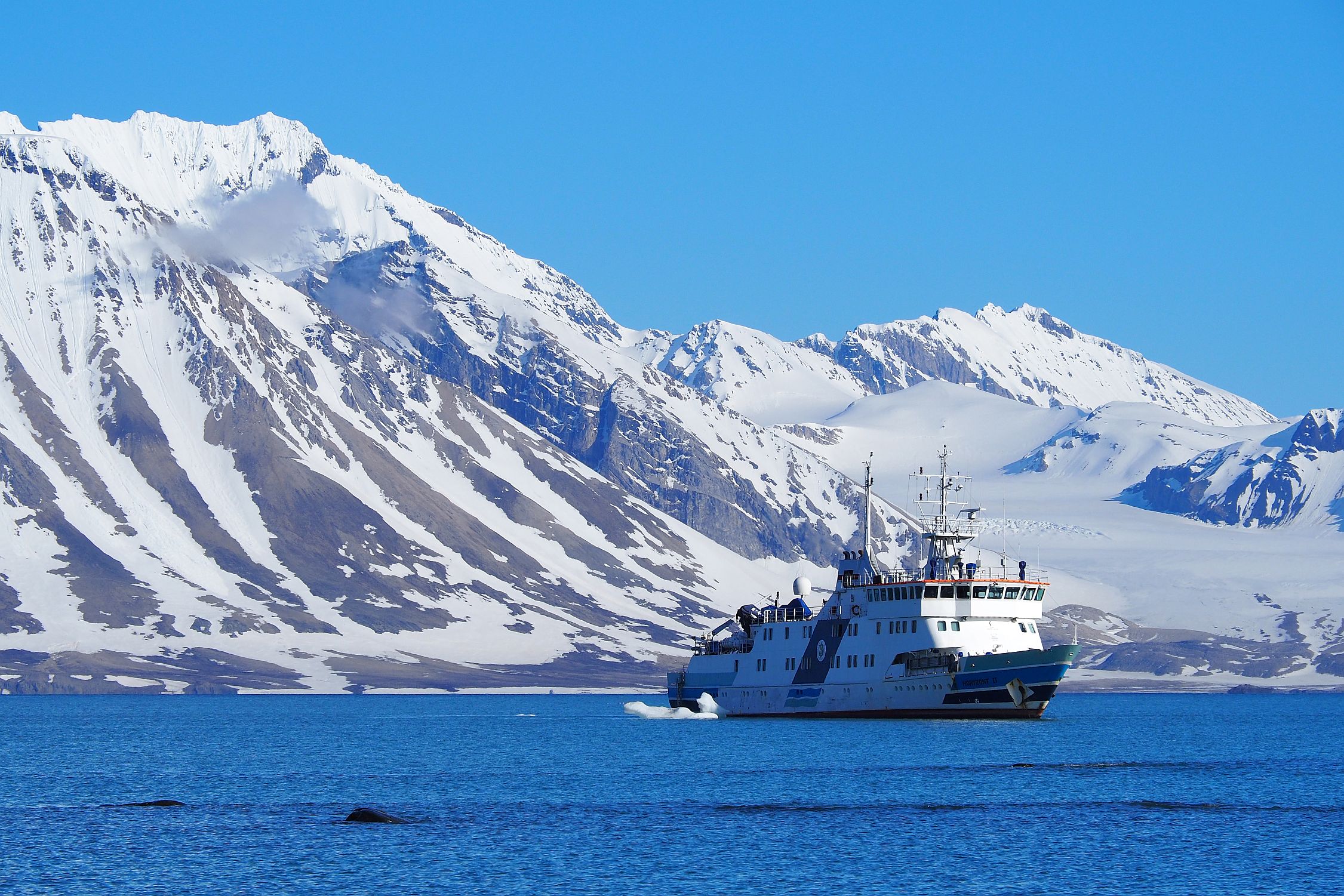
Horyzont II against the backdrop of Sørkappland’s snow-covered peaks
© Barbara Jóźwiak, forScience Foundation
The Polish Polar Station Hornsund, which we reached in about 12 hours, was in a state of upheaval. Not only was there plenty of work connected with unloading Horyzont II, but also this was the day when the team which had spent the whole year at the Station was handing the place over to their successors (i.e. the 42nd Polish Polar Expedition), and finally going home. Despite the commotion, it took us only a few hours to locate and repack the majority of our supplies and equipment, which made it to the Station a few days before and waited to be collected in storerooms and freezers. One of the key elements of our gear was the rubber boat, which travelled to Hornsund in pieces. Putting it back together turned out to be an excellent test of our teamwork skills and a character building experience for everyone involved. Even though we did our best to follow the instructions received (along with the rubber boat) from Leszek Kotwicki from the Department of Marine Ecology of the Institute of Oceanology PAS, it took us three attempt to get the thing in proper working order!
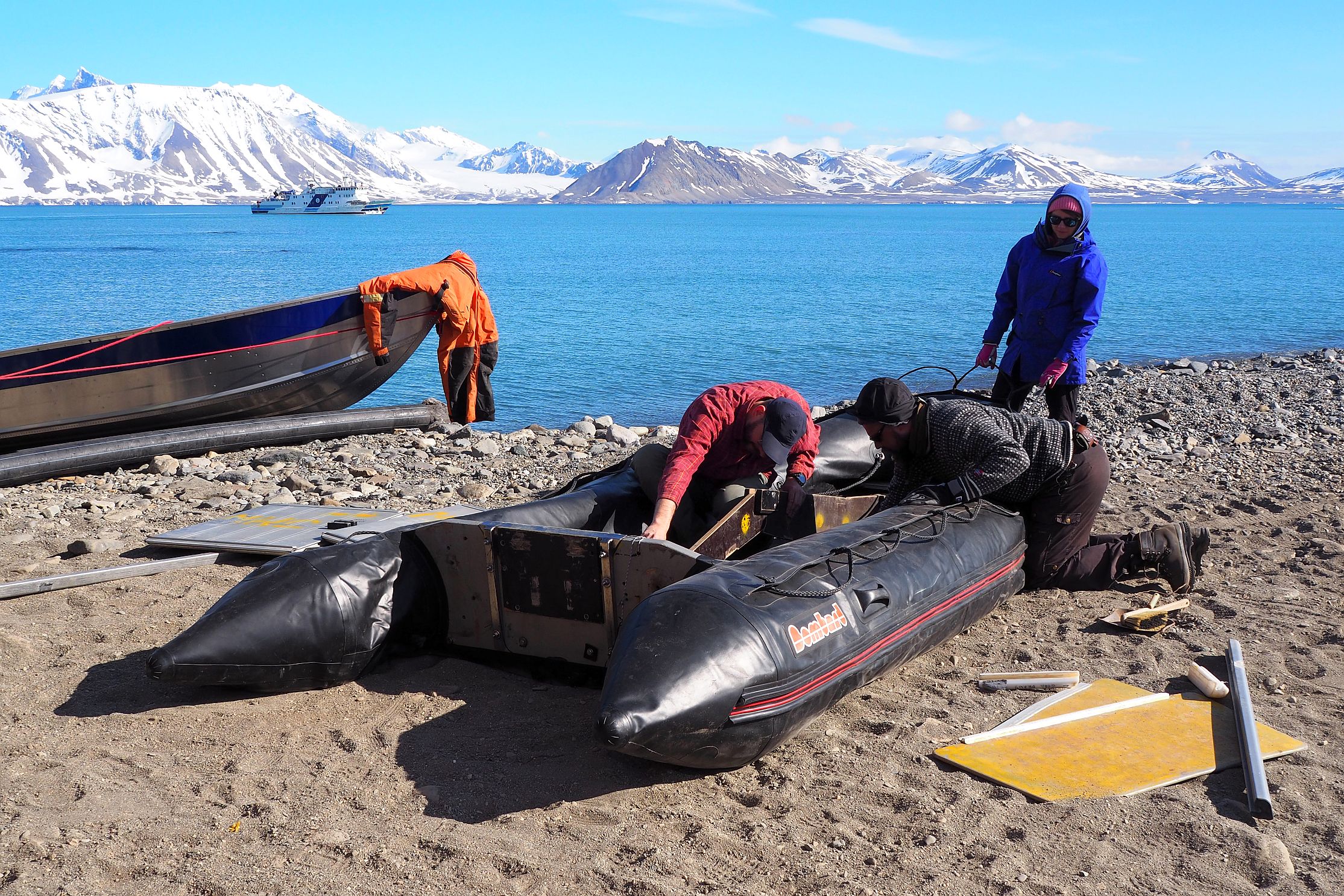
Putting the rubber boat in working order turned out to be a character building experience for all involved.
© Barbara Jóźwiak, forScience Foundation
We crossed the fiord for the first time on June 20, several hours after we’d arrived at the Polish Polar Station Hornsund. Despite the fog and bitter chill, we were happy to be in Palffyodden again. Kapp Horn Hytte, or the Awfully Rotten Cabin from our posts, was still standing where we’d left it in 2015, waving at us with shreds of peeling tarred paper and wet mineral wool coming out from holes in the walls. Entering the cabin turned out to be quite a challenge, as a 30-centimeter layer of ice behind the front door made them impossible to open. Luckily, we came equipped with an axe and camp shovels, which made things considerably easier. A pickaxe we found inside came in handy too!
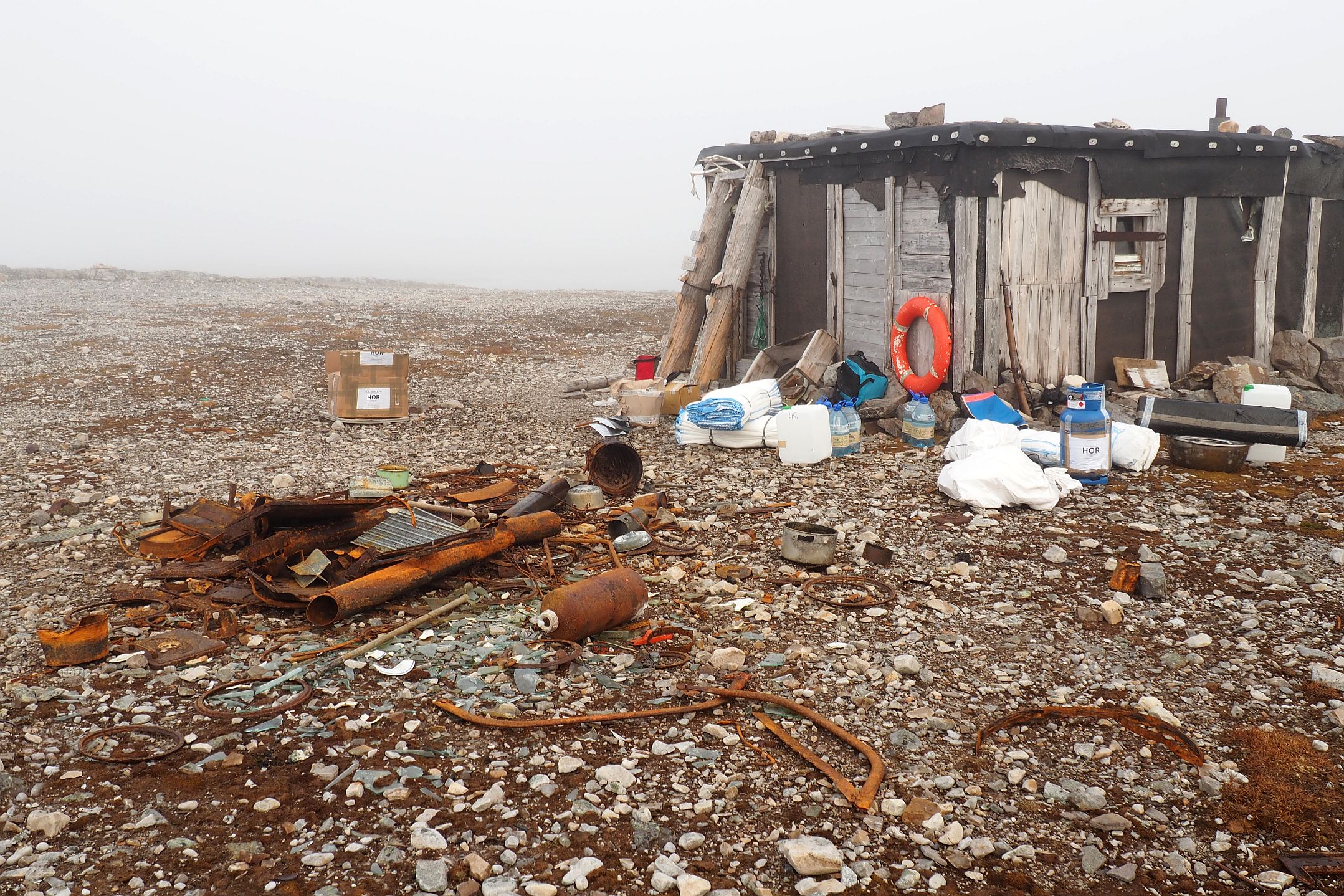
Judging by the entries in the visitors’ book, the place stood empty since May 2016.
© Joanna Nawrot, forScience Foundation
On the following day the weather cleared up, which gave us a chance to enjoy the views and transport everything that might prove useful from the Station to Palffyodden, without having to worry about the fog and the fact that a moment’s inattention could get us heading straight for Greenland. Thanks to our friends from the 42nd Polish Polar Expedition, a few trips were perfectly enough! Our next task was to carry all the stuff to the cabin and arrange it somehow around and inside it. In this case, unfortunately, we needed way more than just a few trips.
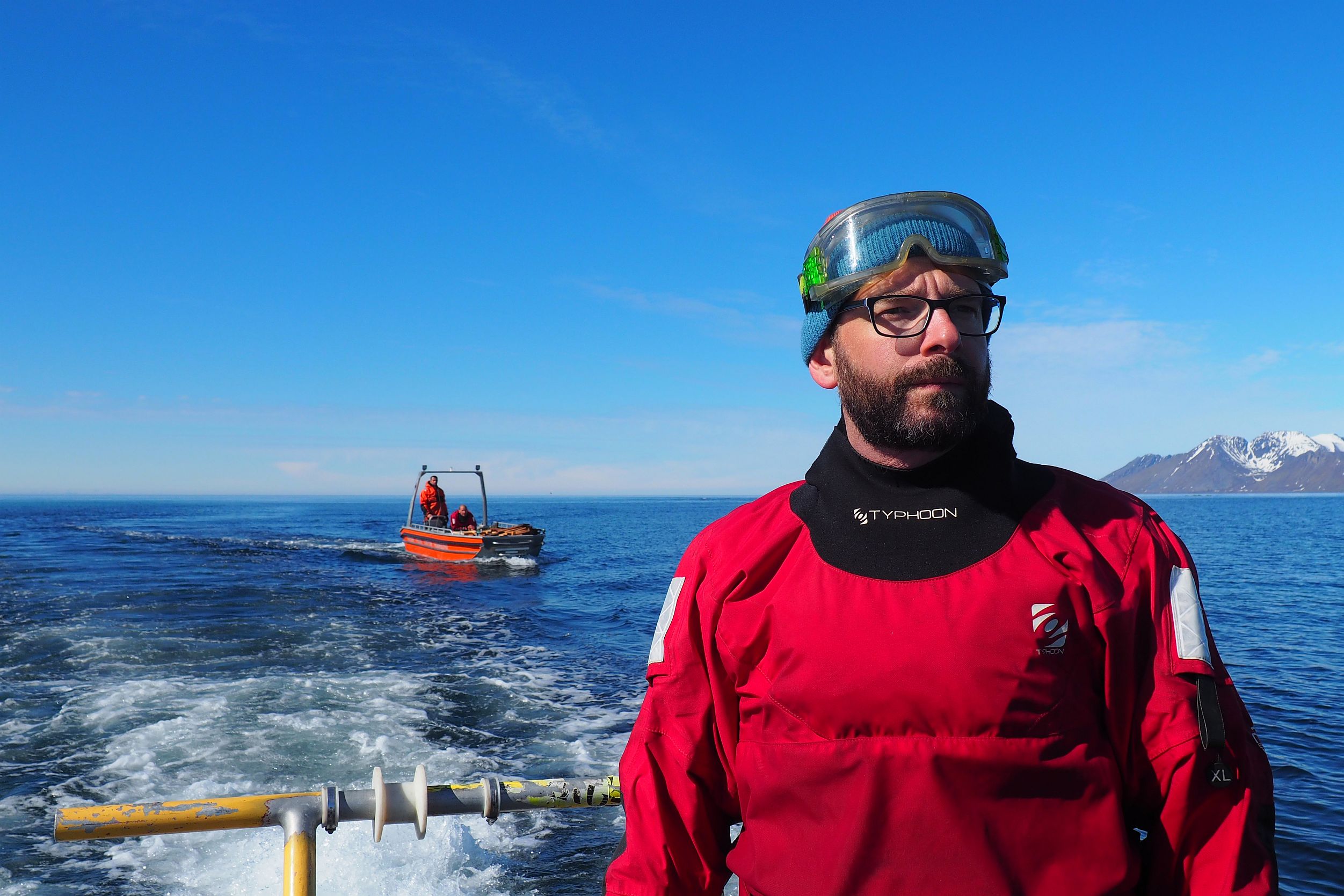
Getting our supplies and equipment to Palffyodden would have been much more difficult without the help of our friends from across the fiord.
© Joanna Nawrot, forScience Foundation
Once we’d taken care of all the bags, sacks, rucksacks, crates, barrels and a pile of wooden planks, we got down to some of the more urgent repairs. First of all, we removed the old, rusty stove, put in a new one (which we’d brought from Poland), and replaced rotten bed slats with something more appealing. In a sudden burst of enthusiasm, we also built a temporary toilet shelter with a gorgeous view onto the fiord. Unfortunately, it fell victim to the first of a series of awfully violent storms which rolled over the area during our stay. The gale gave it such a pounding that we didn’t even try to repair the poor thing. Instead, we moved our bucket (yep, that’s all there is for a toilet in Palffyodden) to a nook in the rock a little closer to the cabin. Still, with the wind being what it was, even the shortest, necessary outings were highly problematic, let alone actual fieldwork! This is why, despite out best intentions, we were not able to do everything we had planned. We do believe, though, that the 15 kilometres we managed to clean is a great result nonetheless.
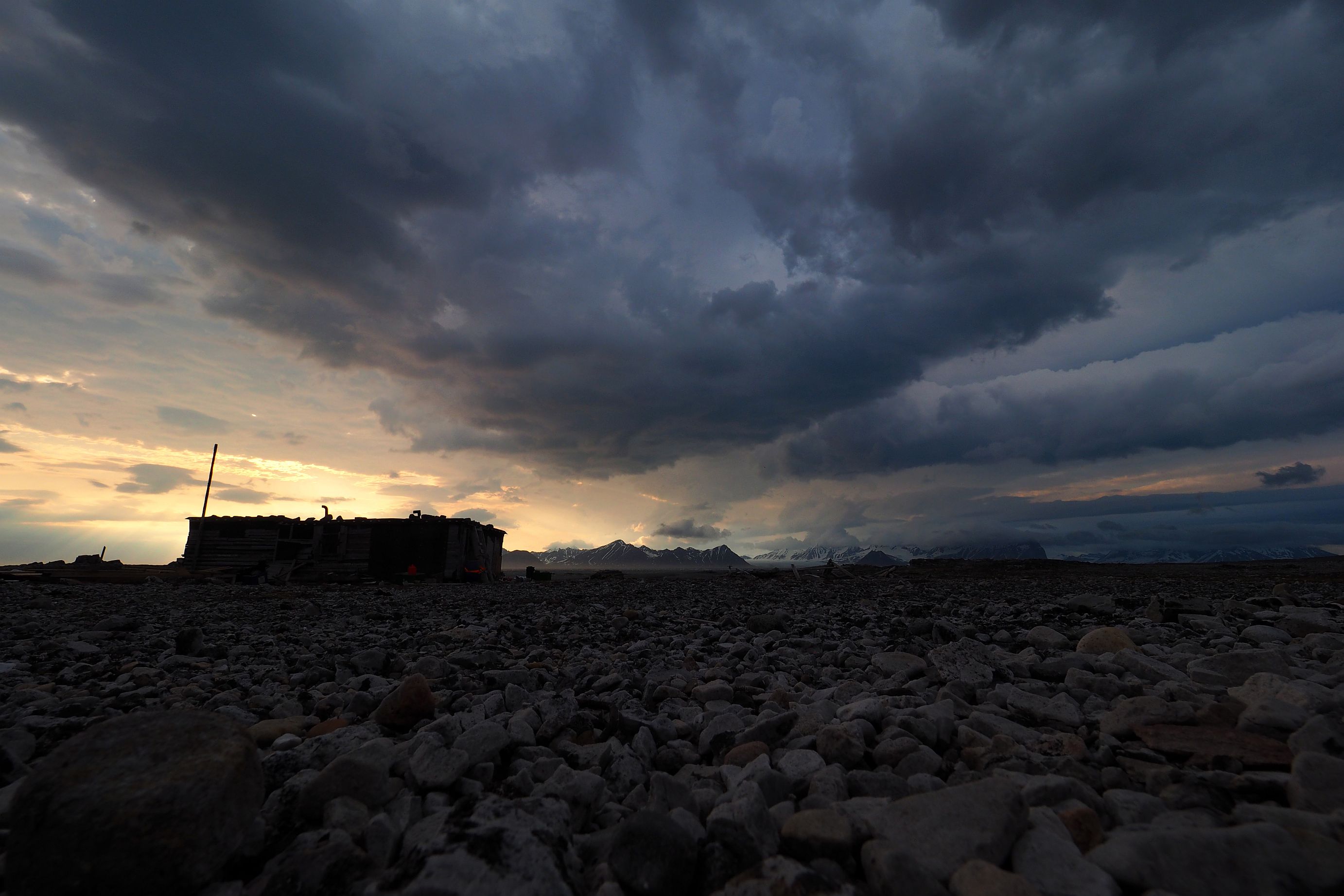
For eight days out of three weeks that we spent in Palffyodden, the wind blew with the average speed of 100 km/h, with gusts reaching even 120 km/h!
© Joanna Nawrot, forScience Foundation
The first day of fieldwork on the beaches of Sørkappland started amidst the chaos caused by an unexpected (though quietly awaited) visit by the king of Svalbard – a polar bear. The first person shaken out of sleep by strange noises outside the hut and a huge, hairy head which suddenly appeared in the window was Adam. After a few minutes of desperately trying to untangle ourselves from our sleeping bags, falling off beds, knocking into furniture, stumbling into holes in the floor, loading flare guns and looking for cameras, we all stood outside the door, marvelling at the impressive rear of our departing guest.
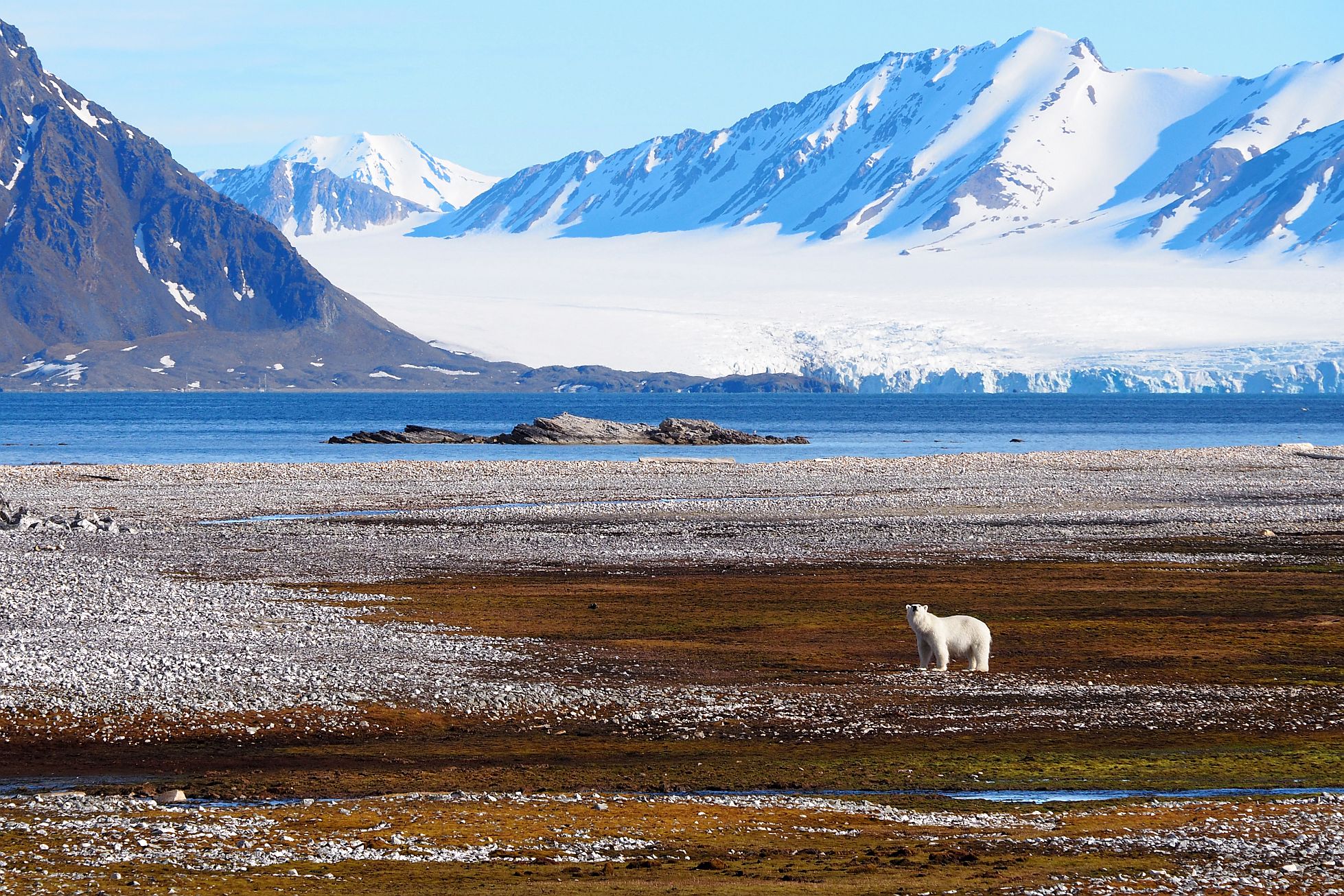
Our smell turned out to be so intriguing that the bear stopped and clearly started to contemplate turning back.
© Barbara Jóźwiak, forScience Foundation
Energized by the morning encounter with the bear, we headed to the coast to start with the cleanup. As is usually the case, the first few kilometres turned out to be quite a challenge. We had to test the methodology we’d worked out in Poland and tweak it so that it better suited local conditions. And these included, among others, a good deal of snow and piles of rotting seaweed. The latter proved to be particularly annoying and it wasn’t just the smell (which did not at all go with the beauty of the landscape), but also the fact that faded strands of seaweed looked just like thin plastic film! Moreover, some pieces of litter blended so well into the background that we often walked right past them and never noticed a thing. Luckily, there were six of us and much of the litter came in colours that are not normally found in the Arctic. The telltale red bottle caps, for example, stood out like a sore thumb.

Red bottle caps raised no doubts, but pieces of plastic film often turned out to be rotting seaweed. Or the other way round.
© Barbara Jóźwiak, forScience Foundation
Do not think, however, that the beaches of Sørkappland were strewn solely with discarded packaging of major American brands. Nothing like that! The litter we found and collected had come from all over the world.
Are you eager for more details? Come back in a while. We promise you won’t regret it!


